[vc_row][vc_column][vc_video link=”https://youtu.be/l2nxgJD0SgE”][vc_column_text]Project Overview:
Architect: Allford Hall Monaghan Morris (2018)
Place: Oklahoma, USA
Number of Containers: 16
Photography by: Timothy Soar
Cost: $1.1 Million[/vc_column_text][vc_column_text]
Story behind the beauty:
On a formerly blighted site, 16 shipping containers have been transformed into elegant homes that are equally eco- and community-minded.

On a previously vacant site in Oklahoma City that was “a magnet for crime,” Allford Hall Monaghan Morris (AHMM) has upcycled 16 used shipping containers to create four single-family homes assembled around a park-like landscape. Squirrel Park was completed in 2018 and cost $1.1 million.

From the get-go, sustainability and neighborhood engagement were the main goals of Squirrel Park. The client owns a local restaurant that largely employs formerly incarcerated members of the community, and the concept of giving back, according the architects, “became a guiding principle in the design.”
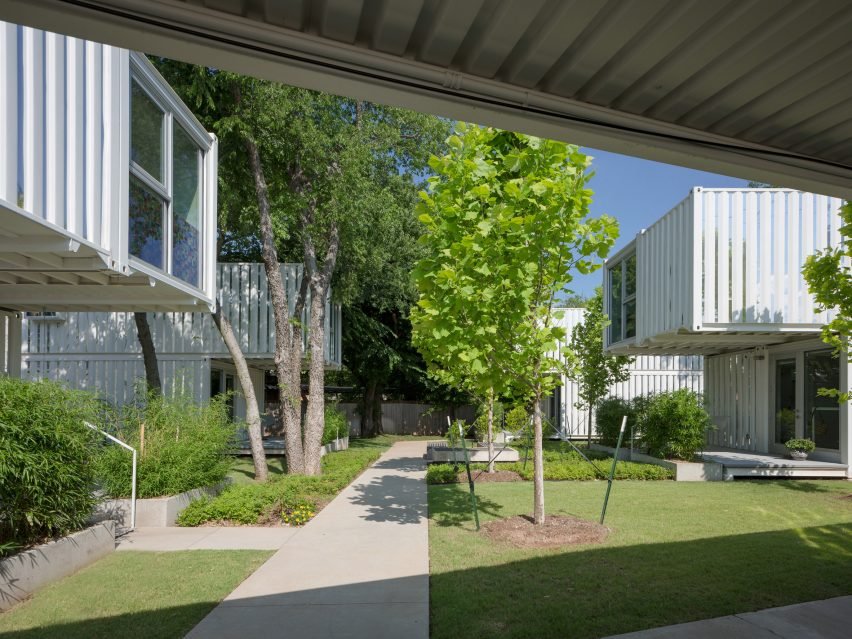
Located between a residential and commercial neighborhood, the empty property had invited crime; in reviving it, the client was interested in creating a small-scale development that balanced “a strong community focus” with privacy. As the project developer and the inhabitant of one of the 1,400-square-foot homes, he had a particularly keen investment in the property—the other three residences will be rented at “competitive market rates.”
AHMM was inspired by the typology of a traditional neighborhood, where the publicly shared street gives way to a semi-public front yard, then a private rear yard. Accordingly, homeowners and guests enter Squirrel Park through a single, shared entrance from the street-side parking area. A shared stone pathway acts as an internal “street” that leads to a communal green area featuring a fountain, benches, and flourishing plantings.

This park-like area gives way to the semi-private, covered porches of the four homes, which are staggered throughout the property to make way for existing, mature trees. This arrangement allows the homes to sit at an angle to the street, providing additional privacy.
AHMM identified used shipping containers as optimal shells because of their durability, flexibility, and potential for reuse.
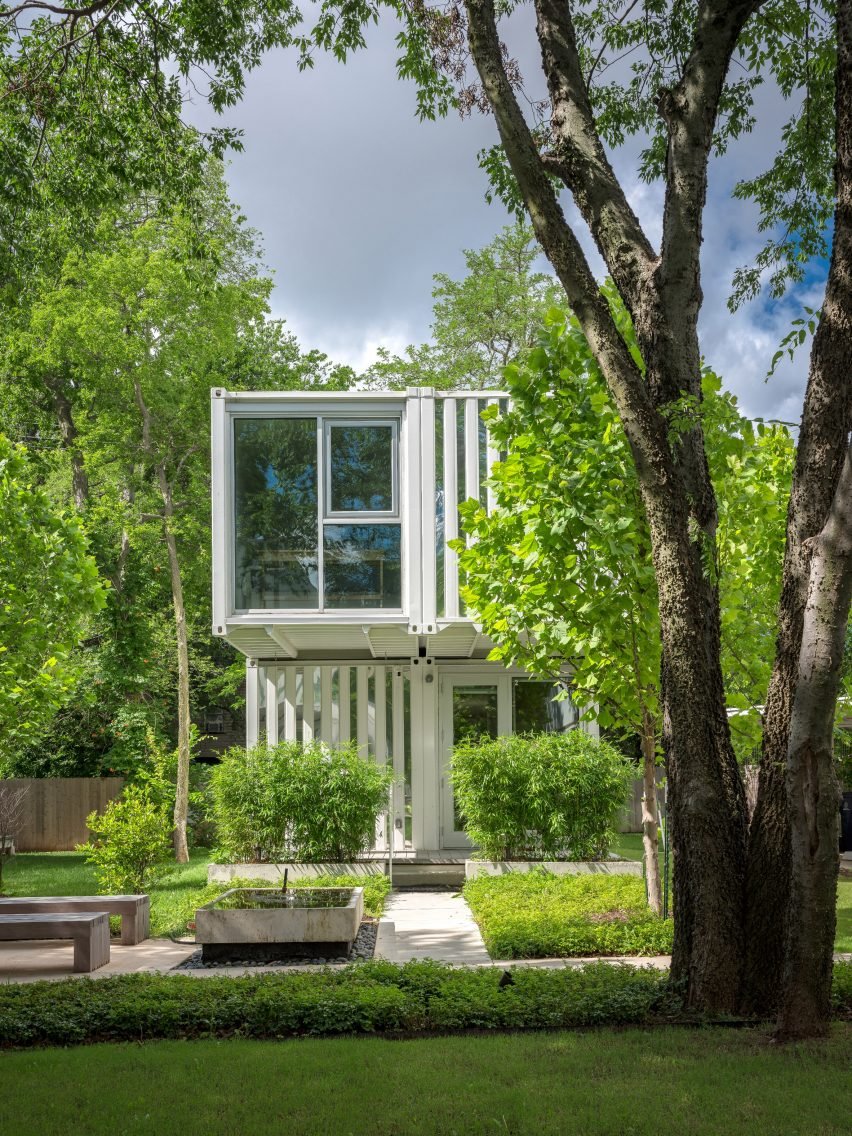
To combat the hot and tornado-prone climate, the architects reinforced the shells and exteriors of the shipping containers to withstand potential wind loads and painted them white to reflect the sun. They also inserted vertical strips of mirror into the recesses of the ridged, metal shells to further reflect light and create a lively, ever-changing facade.

Each home comprises four shipping containers: two on the bottom floor that hold a kitchen and living/dining area, and two on the upper floor that house the two bedrooms separated by a bathroom. The upper level cantilevers out 10 feet toward the central green space, creating a covered porch at the front of the home and an open balcony off the master bedroom at the rear. This simple offset gives the buildings a dynamic form that creates two outdoor/indoor living spaces.
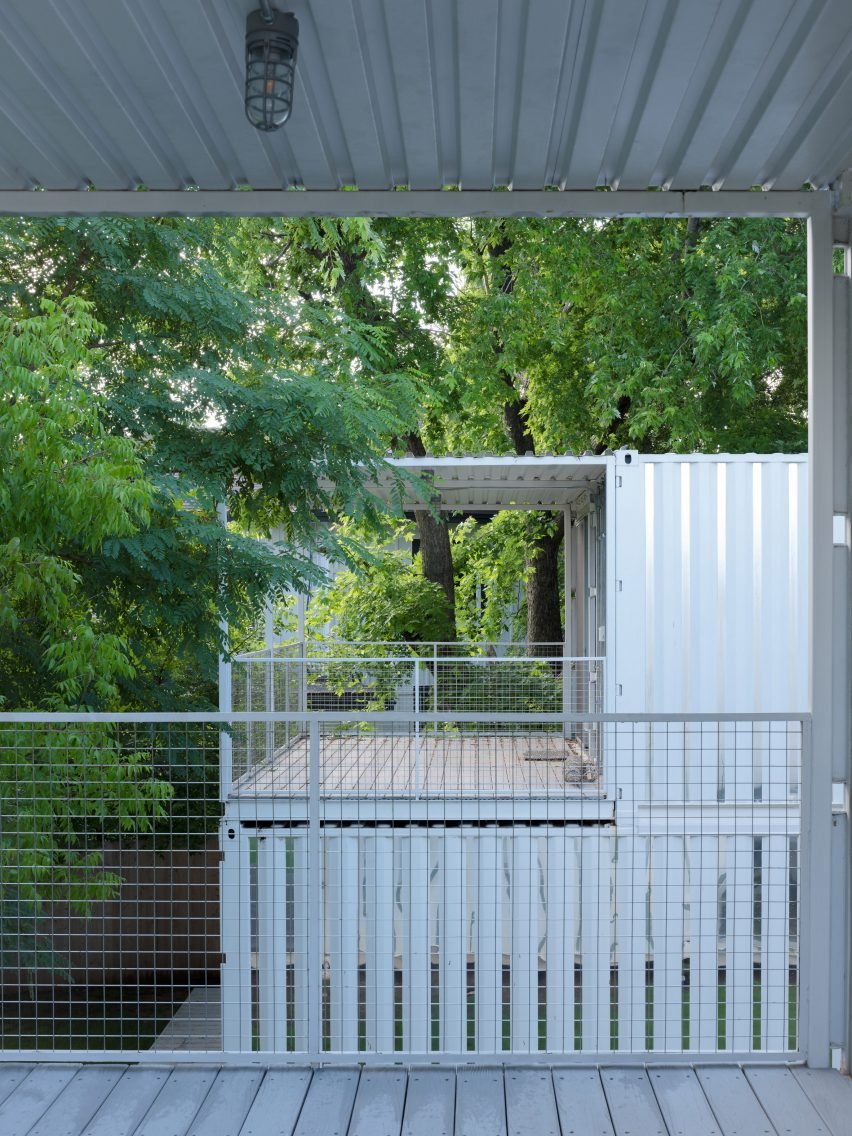
The interior was made energy-efficient with a new, internal skin of steel framing offset one inch from the shipping container exterior and infilled with five inches of closed-cell spray foam insulation. This high degree of insulation allows for a significant reduction in cooling, as does the separate zoning of the two floors of the home.

Large windows with double-insulated glass were punched through in strategic locations to take advantage of natural light, cross ventilation, and privacy. Each home blends a contemporary aesthetic with the industrial origins of the shipping containers. Finishes were selected from AHMM’s proprietary “healthy materials” toolkit, and an 8-person below-grade tornado shelter is incorporated into the site design.

Plans:

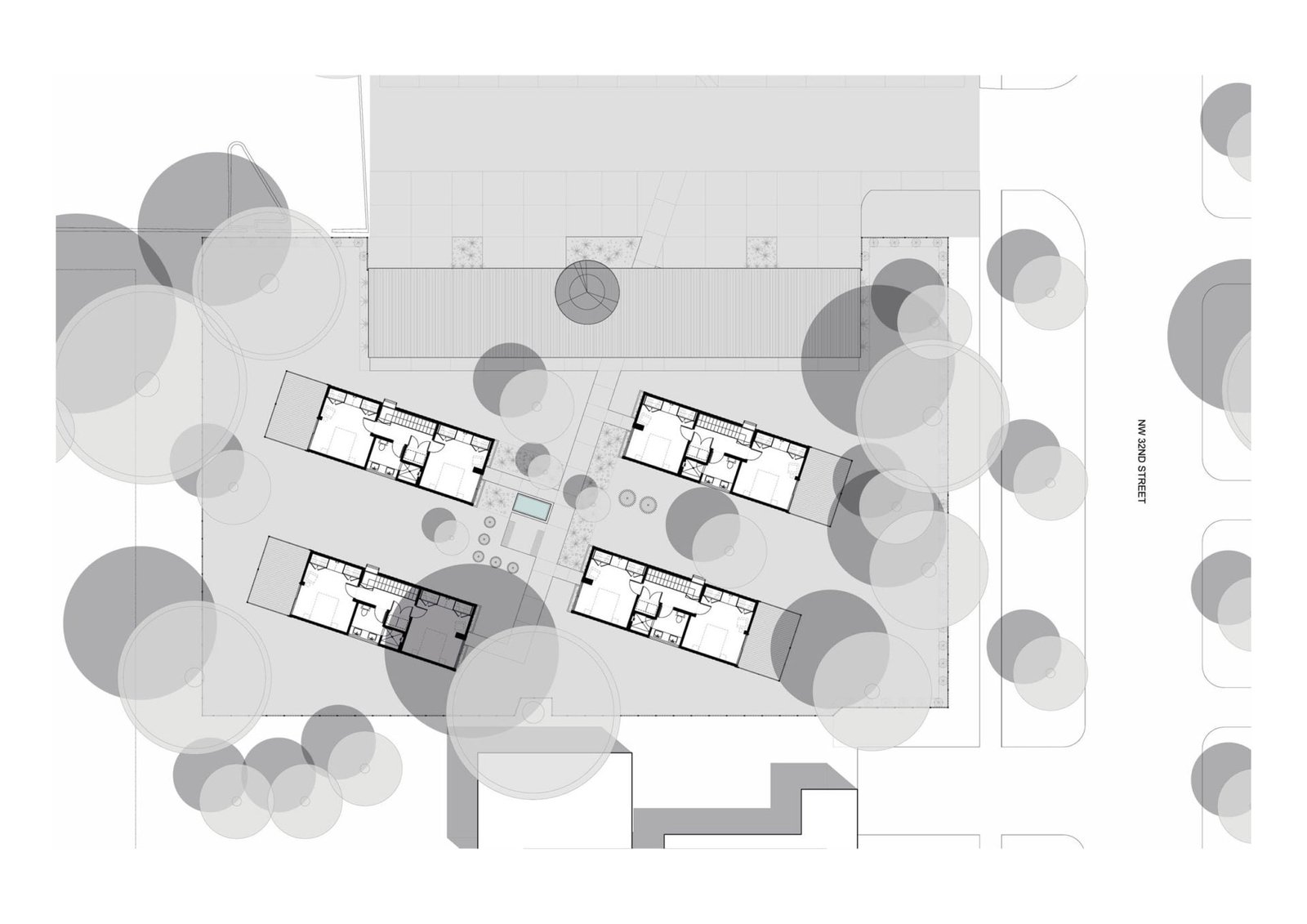
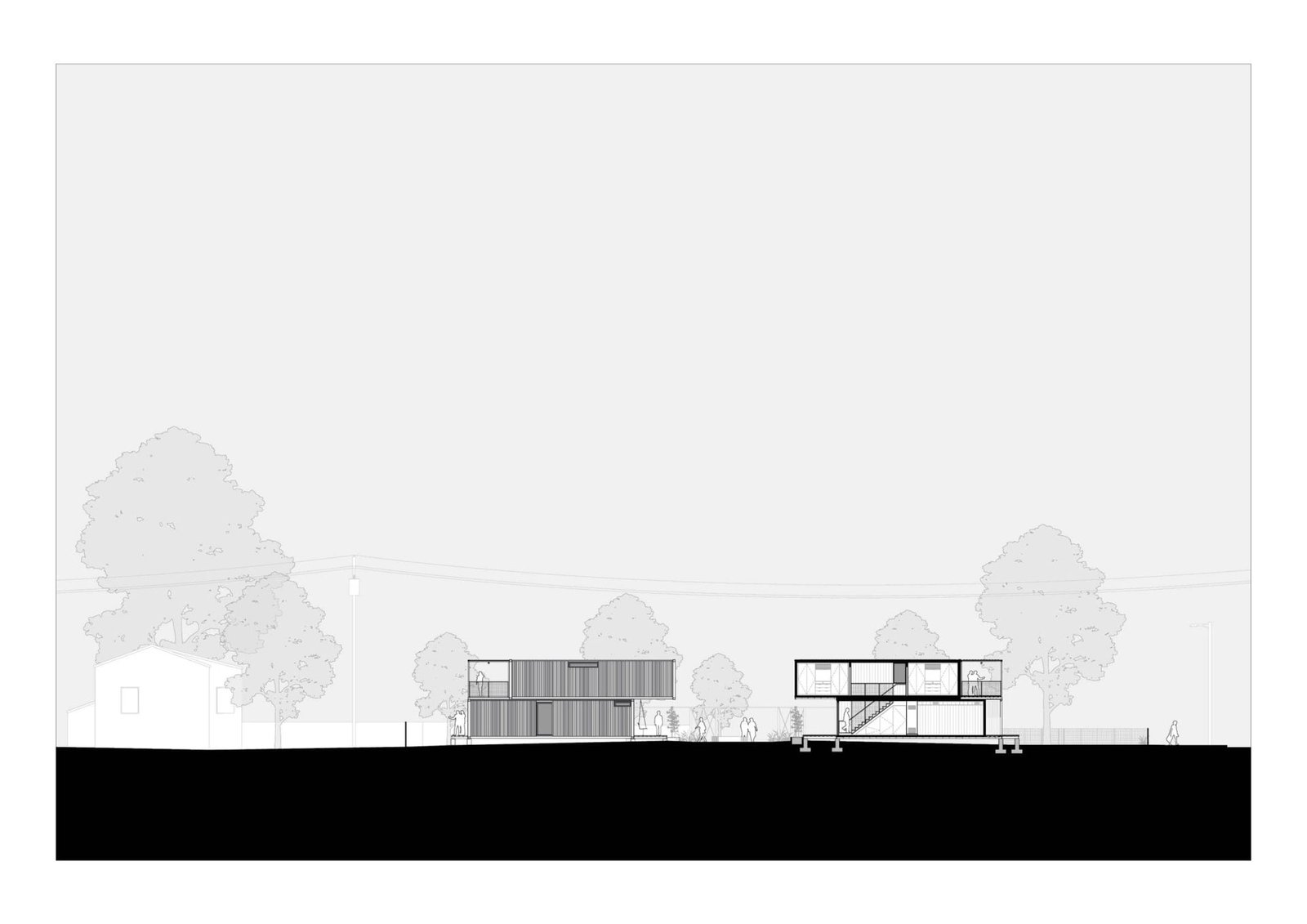

Follow us for wonderful container home ideas:
Instagram: https://www.instagram.com/containerhomeslove/
Pinterest: https://www.pinterest.com/loveshippingcontainerhomes/
[/vc_column_text][vc_gallery type=”nivo” interval=”3″ images=”1362,1352,1357,1354,1353,1351,1359,1358,1350,1360,1355,1356,1348,1347,1349″ img_size=”large”][/vc_column][/vc_row]

